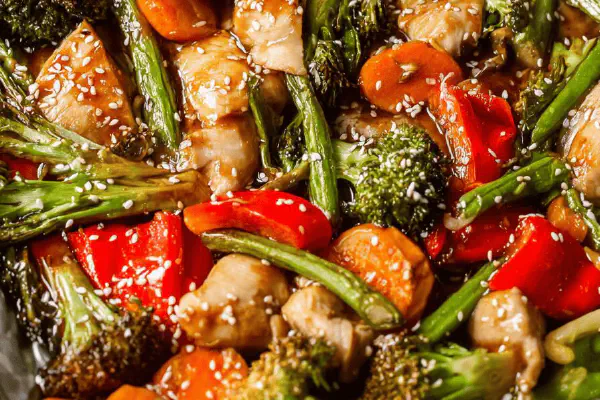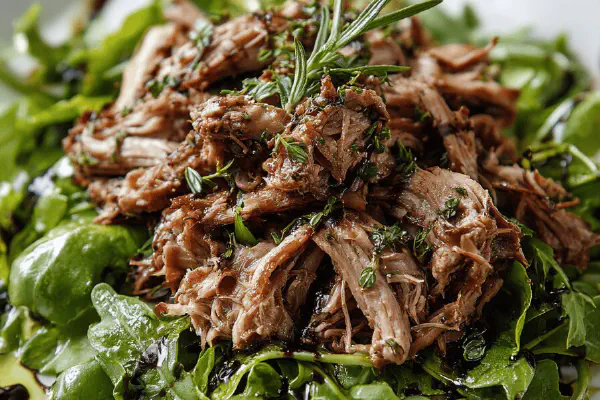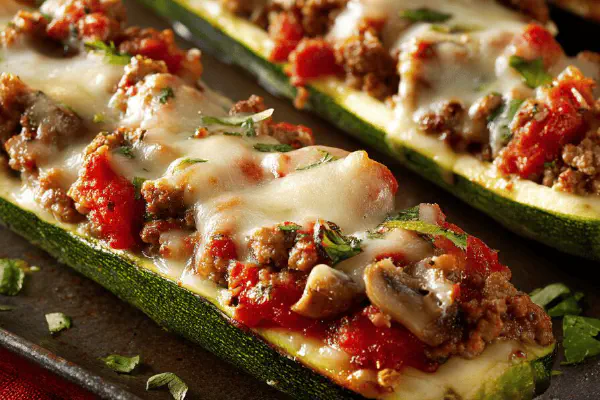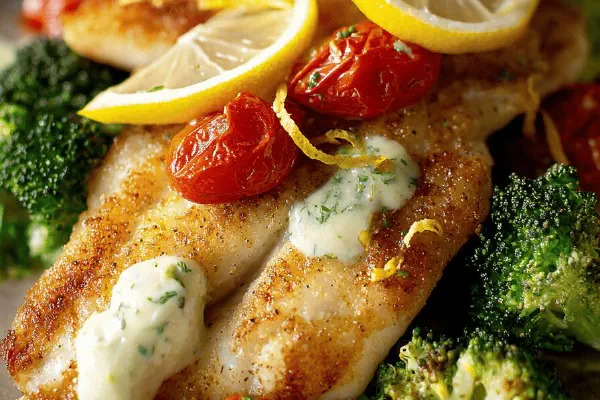Slow-Roast Rib Beef Twist
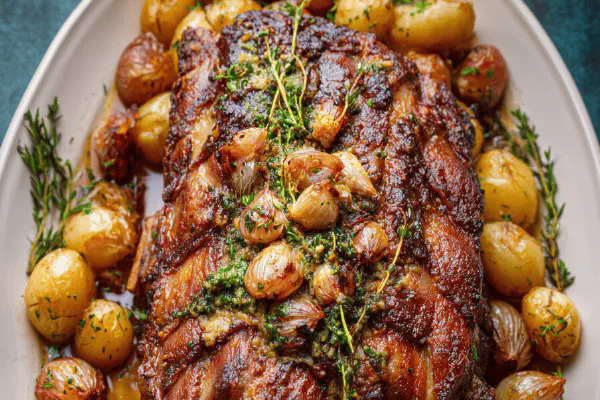
By Emma
Certified Culinary Professional
Ingredients
- 4 shallots thinly sliced
- 3 cloves black garlic minced
- 80 ml pork fat softened
- 700 ml chicken stock
- 2 kg rib beef roast boneless tied with string
- 2 tbsp horseradish
- 5 sprigs fresh thyme
- Salt and cracked black pepper
About the ingredients
Method
- 1. Oven to 140 C (285 F) important. Slower than usual to coax juices out gently; less grey band around edges.
- 2. Heat half pork fat in skillet. Throw in shallots and black garlic. Cook gentle till translucent, edges just caramelizing. Hear sizzle; smell sweetness rising. Toss in thyme leaves last minute. Slide all into heavy roasting pan.
- 3. Pat beef dry with paper towel. Crucial, or roast steams not sears. Rub remaining pork fat all over. Coat with horseradish paste. Season heavy with salt and pepper. This crust forms your flavor shield.
- 4. Nestle roast fat side up on shallot bed. Pour chicken stock around—no drowning. Keeps environment humid, helps slow cooking.
- 5. Insert probe thermometer if you have one. Roast for about 1 hr 45 mins, but ignore clock after an hour. Watch for juice droplets collecting on meat surface—rests before roasting again. Internal temp should hit 56 C (133 F) for medium rare. If no probe, test firmness; should yield under gentle pressure but bounce back.
- 6. Remove roast, tent loosely with foil. Let rest 15 minutes minimum. Intensifies flavor; locks in moisture. Meanwhile, reduce pan juices on stovetop if you want a quick gravy. Skim fat if necessary.
- 7. Slice thin against grain. Serve with roasted shallots and pan jus. Potato mash or simple greens to cut richness.
Cooking tips
Chef's notes
- 💡 Start roasting at 140 C always; higher temp tastes dry, tough. Pat meat fully dry or it steams, no crust. Use pork fat over butter; better crust and deeper aroma. Black garlic replaces raw; less sharp, adds caramelized depth. Pour chicken stock around roast—never on top. Keeps humidity high, crust intact. Temperatures matter; probe if you got one. Target 56 C for medium-rare, 58 if you want firm. Rest beef loosely covered minimum 15 minutes—locks juices inside slice.
- 💡 Shallots cook slowly in half pork fat; edges just caramelize, smells nutty, sweet. Mix thyme in last minute, keeps fresh aroma, not bitter. Rub horseradish thick; punch cuts richness better than mustard. Tie roast tightly; shape holds and slices even. Use fresh thyme, never dried. If pan juices too thin, reduce fast on stovetop, add salt later. Don’t skip resting or juices leak on cutting board. Slice thin against grain, stops chewiness, shows tender fibers.
- 💡 Probe thermometer saves guessing, but watch meat surface juices too. Droplets gather before resting—sign to pull out. If no probe, press with finger; yields gentle but springs back. Use chicken stock for lighter base; beef broth too strong or salty can mask thyme. Pork fat easiest fat to find, swap for duck fat or olive oil if needed but less crust punch. Remove roast; tent foil loosely, not tight or steam builds. Keep probe clean if in long cook. Timing guidelines only; meat varies by shape and brand.
- 💡 Layer shallots and garlic first; caramelize edges slowly in pork fat. Smells like brown sugar and roast merge. Black garlic melts into fat—no bitterness. Pour stock carefully, keep roast elevated on shallots bed. Use string to tie roast tight; helps even cooking, easier slicing. Watch visual cues, no gray ring means even crust got sealed. Remove roast when temp hits 56 C internal, not earlier. Rest crucial, redistributes juice. Can make pan sauce by reducing those juices once roast’s resting. Always season well, salt drives flavor deeper during slow cook.
- 💡 Use heavy roasting pan for even heat distribution, no flare ups. Dark pan absorbs heat better but watch caramelization. Don’t crowd shallots and garlic; stir in skillet before transfer. Pour stock last; avoid pouring over meat or lowers crust quality. Timing flexible—1 hr 45 min typical but check temp and juices. Rest long enough to firm up slices; cutting hot loses moisture. Slice thin, against grain for tenderness not stringy chew. Use pan jus with splash of wine if desired to add depth to sauce. Don’t skip fresh thyme sprigs, dried fade fast.
Common questions
How to check doneness without probe?
Touch test works. Press center, should feel soft but bounce back. Watch surface juices. Shiny drops mean almost ready. Rest then slice is key. Insert knife for juice color if unsure.
Can I use butter instead of pork fat?
Butter burns easy under low heat. Pork fat holds up better, deeper flavor and crust. Duck fat if you got. Olive oil lighter but less savory. Butter loses punch in slow roast here.
Why does my roast steam, not brown?
Usually not dry enough. Pat roast thoroughly with towel before rub. Wet surface traps moisture, turns steaming. Also check oven temp steady at 140 C. Avoid opening door often.
How to store leftovers?
Wrap tightly, refrigerate within 2 hrs. Use within 3 days. Freeze in airtight container; lasts up to 2 months. Warm gently in oven or skillet later, avoid microwave to keep texture. Slice thin for even reheating.
